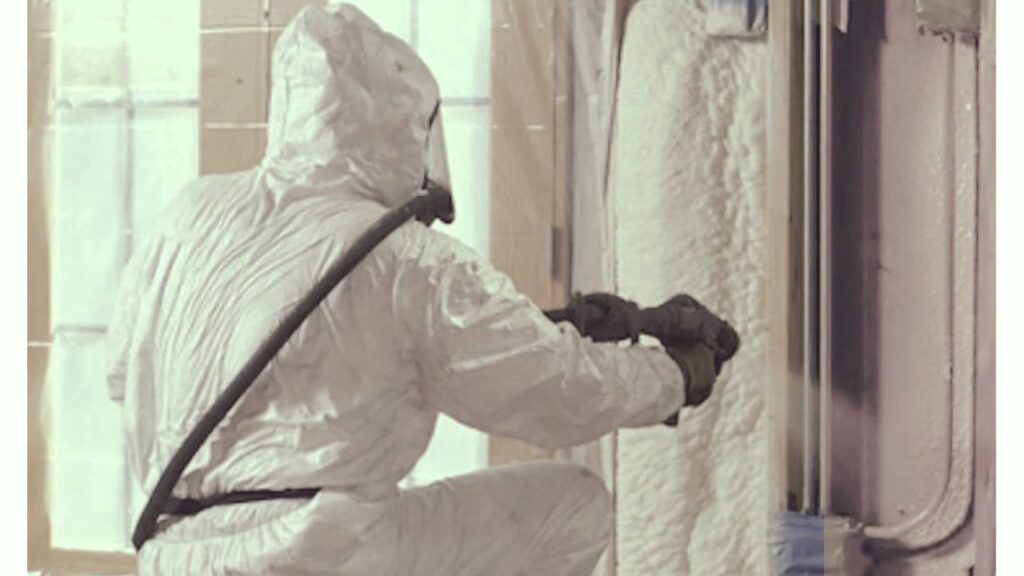Hansen property owners gain the most value from spray foam insulation when matching the right foam type to specific building needs. Open-cell foam excels for interior walls and sound dampening, while closed-cell provides superior moisture resistance and structural strength for roofs and exterior applications. Local climate considerations make proper foam selection critical—Hansen’s temperature swings demand insulation with consistent R-value performance year-round.
According to the Department of Energy’s 2024 Residential Energy Consumption Survey, properly installed spray foam insulation in Hensen reduces heating and cooling costs by 30-50% compared to traditional insulation methods in Idaho’s climate zone. These significant savings come from spray foam’s superior air sealing properties and consistent performance across seasonal temperature variations.
Spray Foam Options for Hansen Properties
Hansen property owners face unique insulation challenges due to the region’s distinctive climate patterns. The right insulation solution depends on the specific application area and performance needs.
| Foam Type | Best Applications | R-Value | Cost | Moisture Resistance | Air Sealing | Sound Dampening |
| Open-Cell | Interior walls, Attics with proper ventilation, Sound barriers | R-3.7 per inch | $1.25-1.75 per sq ft | Moderate | Excellent | Superior |
| Closed-Cell | Exterior walls, Basements, Crawl spaces, Roofing | R-6.5 per inch | $1.85-2.25 per sq ft | Excellent | Superior | Good |
| Hybrid Systems | Whole-house solutions, Mixed-use buildings | Varies | $1.65-2.50 per sq ft | Excellent | Superior | Very Good |
Bonus Tip: In Hansen’s climate, closed-cell foam in crawl spaces and basements prevents ground moisture migration—a common issue that standard insulation can’t address. This approach eliminates up to 90% of humidity-related problems according to regional installation data.
Climate-Specific Performance in Hansen
Hansen’s climate presents specific insulation challenges that spray foam addresses more effectively than conventional options. The region experiences significant temperature variations that demand consistent insulation performance.
The Idaho Energy Office reports that buildings insulated with spray foam maintain more consistent indoor temperatures during Hansen’s extreme temperature swings, reducing HVAC cycling by up to 40% compared to fiberglass insulation (Idaho Energy Efficiency Report, 2024).
Technical performance characteristics that matter most for Hansen properties:
| Performance Factor | Standard Fiberglass | Spray Foam (Closed-Cell) | Impact for Hansen Properties |
| Air Infiltration Reduction | 20-30% | 90-95% | Critical during winter wind events |
| Moisture Vapor Transfer | Poor control | Excellent barrier | Prevents seasonal moisture buildup |
| R-Value Stability | Degrades when wet | Maintains performance | Consistent during humid seasons |
| Structural Reinforcement | None | 250% increase in wall strength | Valuable during heavy snow loads |
| Draft Elimination | Moderate | Complete | Essential during severe temperature drops |
Hansen properties benefit particularly from spray foam’s ability to adapt to irregular spaces and penetrations, completely sealing areas where traditional insulation creates thermal bridges. This comprehensive air barrier prevents the stack effect that draws cold air in through foundation cracks and pushes heated air out through upper levels.
Things to Consider Before Making a Decision
Property owners should evaluate several factors before choosing a spray foam insulation solution:
- Building Structure Age: Older Hansen homes may require structural assessment before adding the weight of closed-cell foam.
- Ventilation Requirements: Proper mechanical ventilation becomes more important after creating a tight building envelope with spray foam.
- Existing Insulation Condition: Determine whether complete removal or encapsulation of existing insulation offers the best performance outcome.
- Project Timeline: Spray foam installation requires temporary evacuation of the property due to off-gassing during curing (typically 24-48 hours).
Bonus Tip: Schedule spray foam installation in Hansen properties during moderate temperature seasons (spring/fall) when the foam cures most effectively and evenly. Temperature extremes can affect foam expansion rates and final performance.
Insulation Services for Hansen Properties
Valley Spray Works offers comprehensive insulation solutions designed for Hansen’s specific climate challenges:
- Open-Cell Spray Foam: Ideal for interior walls and attics where sound dampening is a priority while providing excellent air sealing properties.
- Closed-Cell Spray Foam: Perfect for basements, crawl spaces, and exterior applications where moisture resistance and maximum R-value are essential.
- Intumescent Coatings: Fire-resistant protective layers that expand when exposed to heat, providing crucial safety for structural elements.
- Spray Foam Roof Insulation: Seamless roofing solution that insulates, waterproofs, and extends roof lifespan with reflective coating options.
- Commercial Roofing: Specialized roofing systems designed for commercial buildings that improve energy efficiency while protecting valuable business assets.
- Blown-In Insulation: Quick-installation option for attics and existing wall cavities where minimal disruption is preferred.
- Thermal Insulation Coating: Specialized reflective coatings that reduce heat transfer through walls and roofs, particularly effective during Hansen’s hot summer months.
- Fluid Applied Vapor Barrier: Seamless moisture control solution that prevents water vapor migration through foundations and walls, essential for Hansen’s seasonal moisture variations.
- Tnemec Coatings: High-performance protective coatings that provide exceptional durability and corrosion resistance for both residential and commercial applications.
Common Questions About Spray Foam for Hansen Properties
How long before you can occupy a house after spray foam installation? Most installations require 24-48 hours of evacuation while the foam cures. Hansen’s temperature and humidity levels can affect this timeframe slightly.
How does spray foam handle Hansen’s temperature fluctuations? Spray foam maintains consistent R-value and air sealing properties regardless of temperature changes. Unlike fiberglass insulation, it doesn’t compress or shift over time.
Will spray foam help with Hansen’s seasonal allergy issues? Yes, the complete air seal provided by spray foam significantly reduces pollen, dust, and other allergen infiltration—a particular advantage during Idaho’s heavy pollen seasons.
Maximizing Energy Efficiency with Spray Foam
Spray foam creates a building envelope that works as a complete system rather than just an insulation layer. For Hansen properties, this system approach delivers superior performance.
The Idaho Power Efficiency Program indicates that spray foam insulated homes require heating and cooling equipment with 25-30% less capacity than conventionally insulated homes of the same size. This reduction means lower equipment costs and reduced energy consumption throughout the system’s lifespan.
Frequently Asked Questions
How long does spray foam insulation last in Hansen’s climate?
Quality spray foam installations typically last the lifetime of the structure (40+ years) without degradation. Unlike fiberglass which can sag and compress, spray foam maintains its shape and performance throughout its lifespan.
Can existing Hansen homes be retrofitted with spray foam?
Yes, existing homes can be retrofitted through various application methods. For walls, this may involve drilling small access holes or removing sections of drywall. Attics and crawl spaces usually allow direct application with minimal disruption.
How does spray foam affect indoor air quality?
Once fully cured, spray foam is inert and doesn’t release chemicals into the air. The complete air seal actually improves indoor air quality by preventing outdoor pollutants, dust, and allergens from entering the building envelope.
Does spray foam help with noise reduction in Hansen properties?
Open-cell foam provides excellent sound dampening properties, reducing noise transmission by up to 90%. This makes it particularly valuable for properties near Hansen’s busier roads or commercial areas.
What maintenance does spray foam require?
Properly installed spray foam requires no maintenance throughout its lifespan. Annual visual inspections are recommended to check for any rare instances of settling or separation, particularly around structural changes or renovations.
Ready to Achieve Year-Round Comfort and Efficiency?
Spray foam insulation offers Hansen property owners the most effective solution for the region’s specific climate challenges. The complete air seal, moisture control, and consistent R-value performance deliver measurable improvements in comfort and energy efficiency.
Apply these insights now: Schedule your free property assessment with Valley Spray Works. Get expert guidance on the right insulation strategy for your specific Hansen property needs.
Valley Spray Works, (208) 490-9260, [email protected]
Reviewer: Emily Martinez has 12 years of experience in spray foam insulation. She reviewed this article and suggested ways to make the content more useful for contractors looking to grow their customer base.






